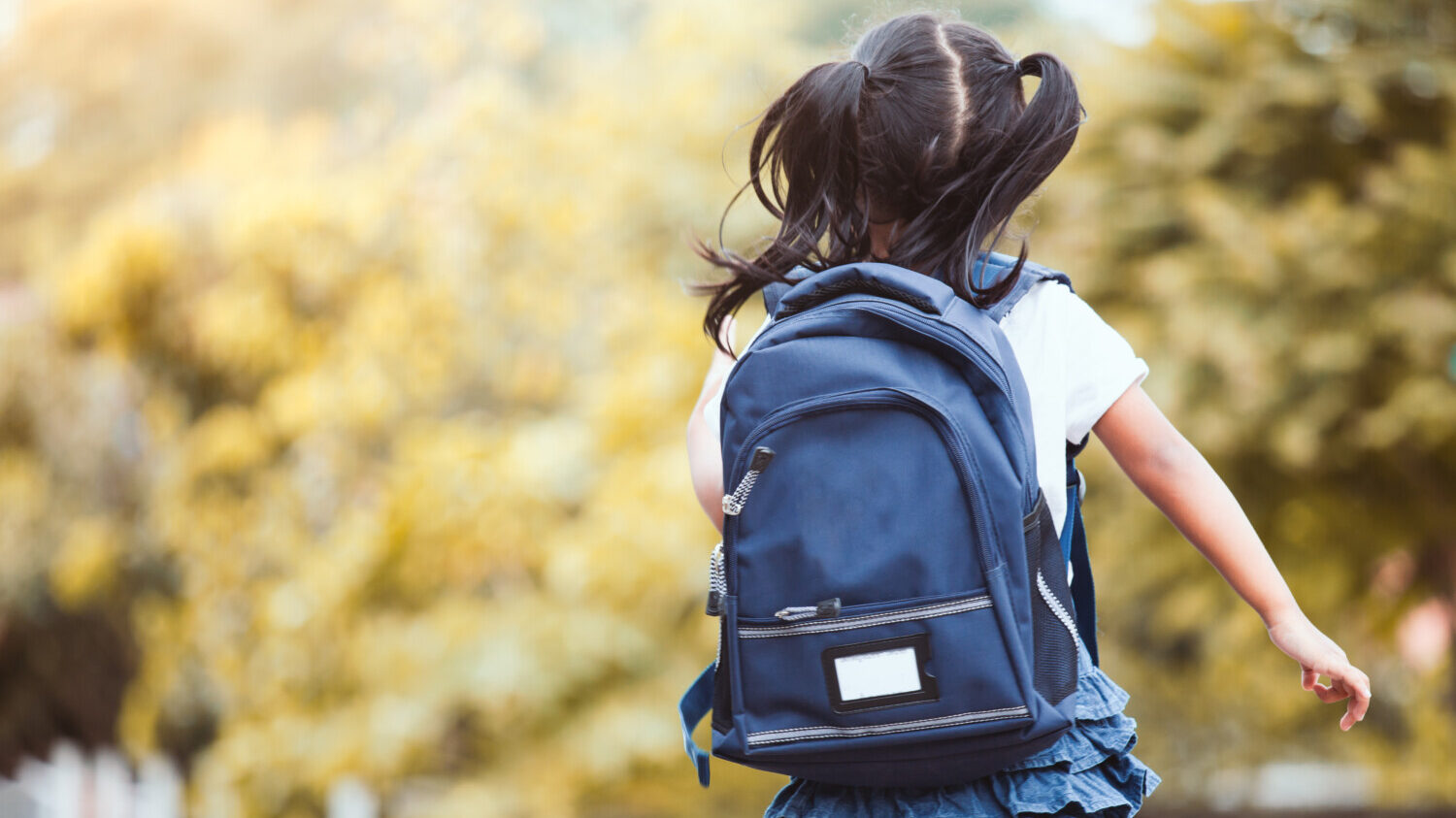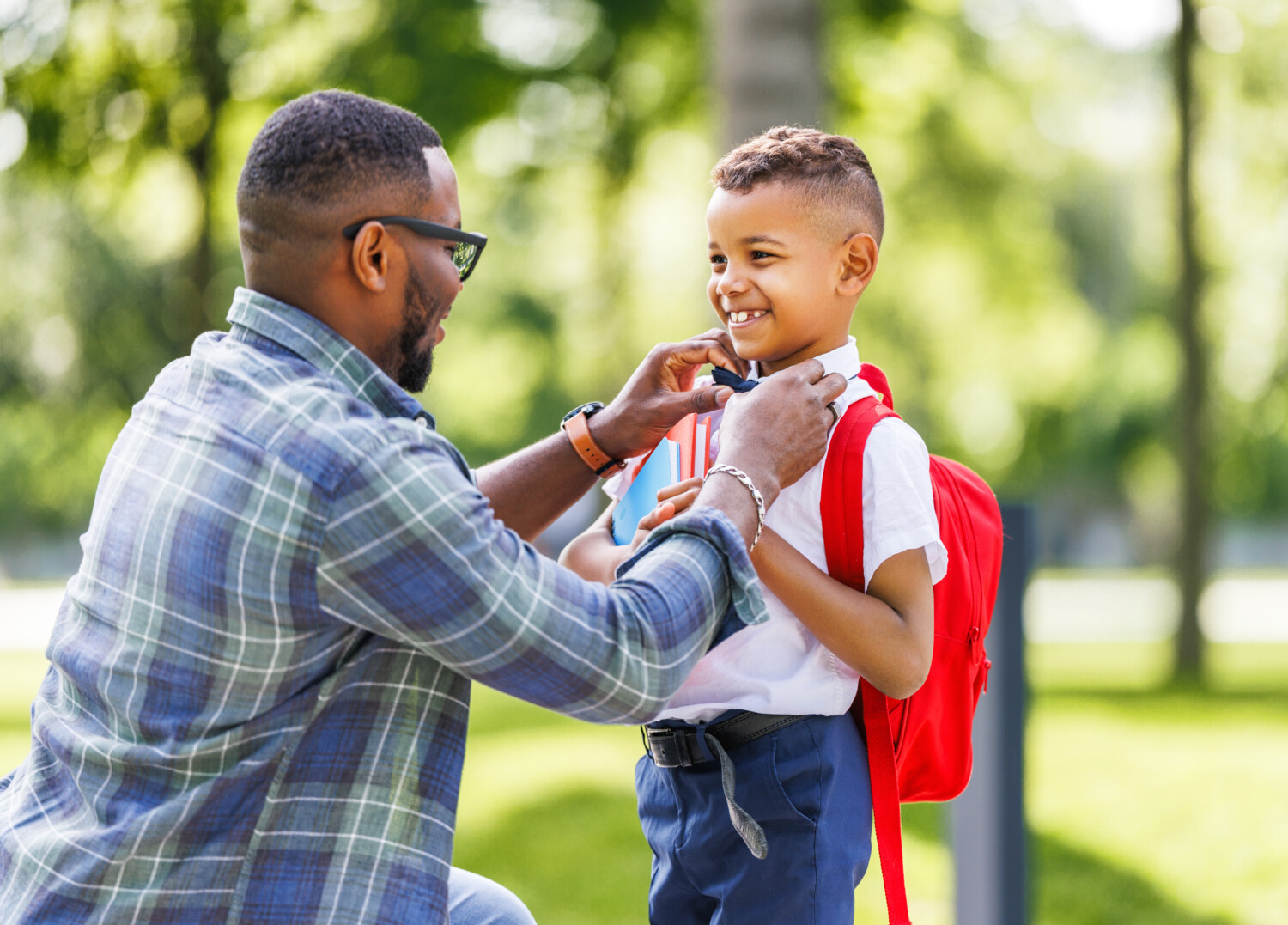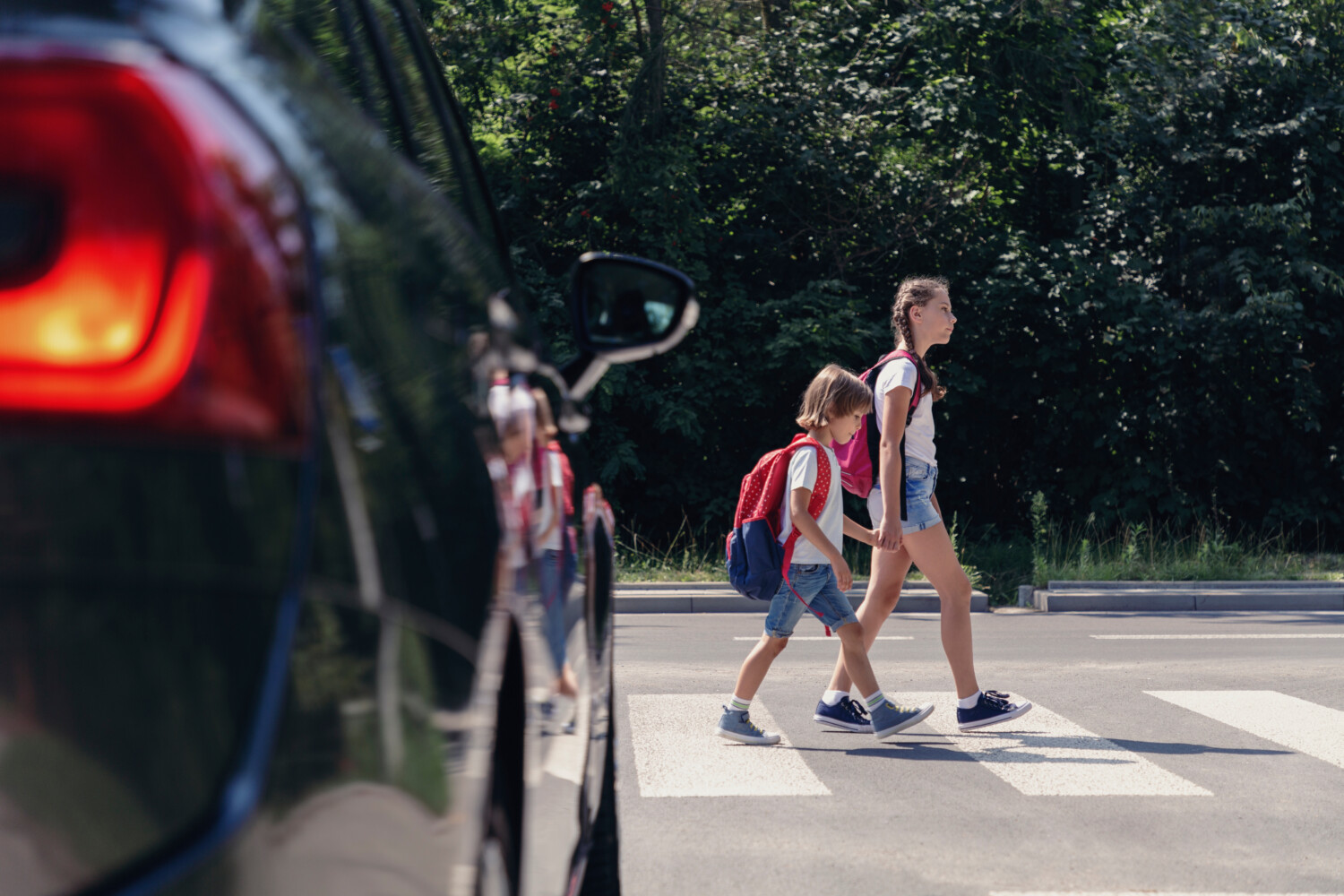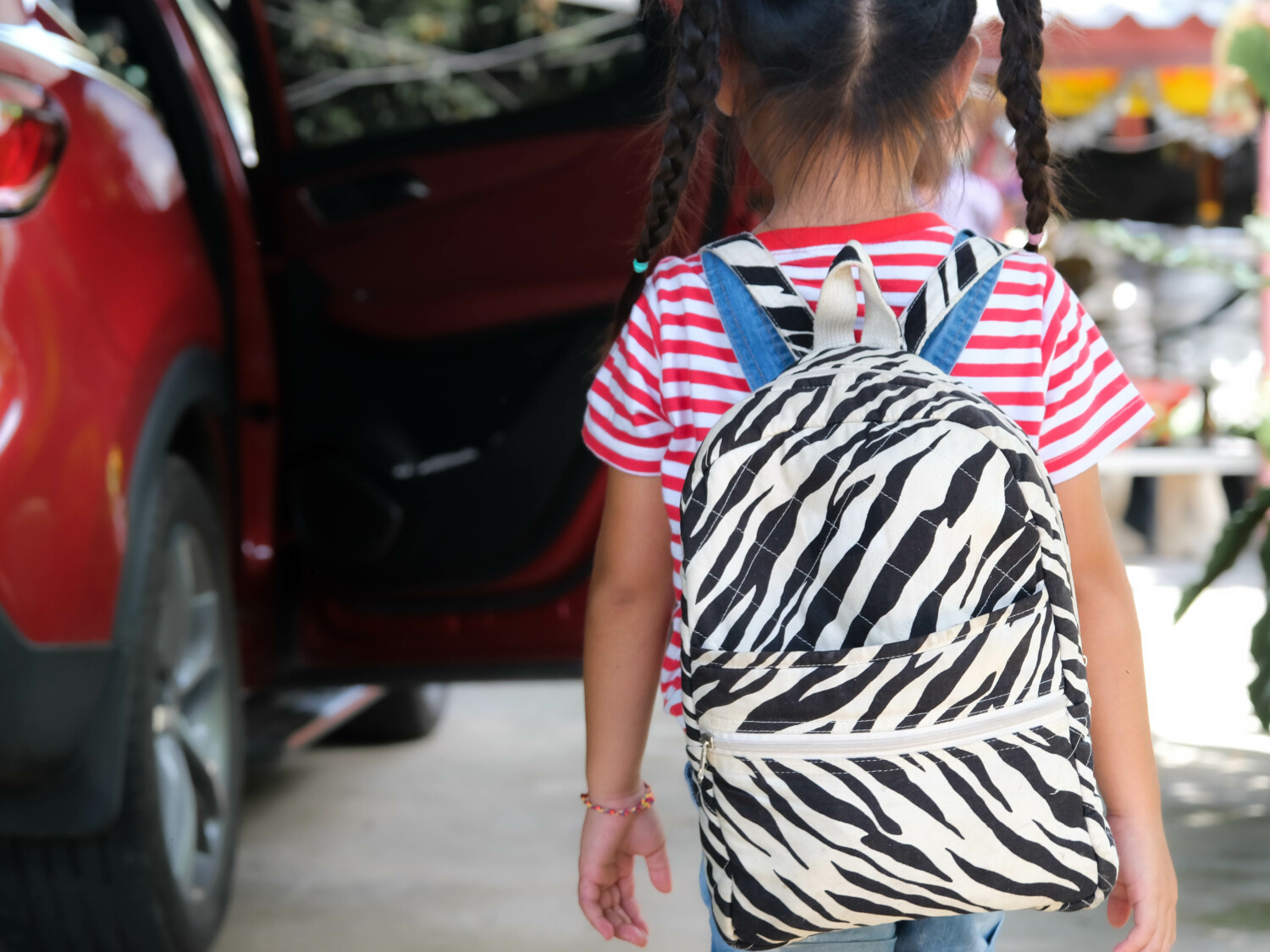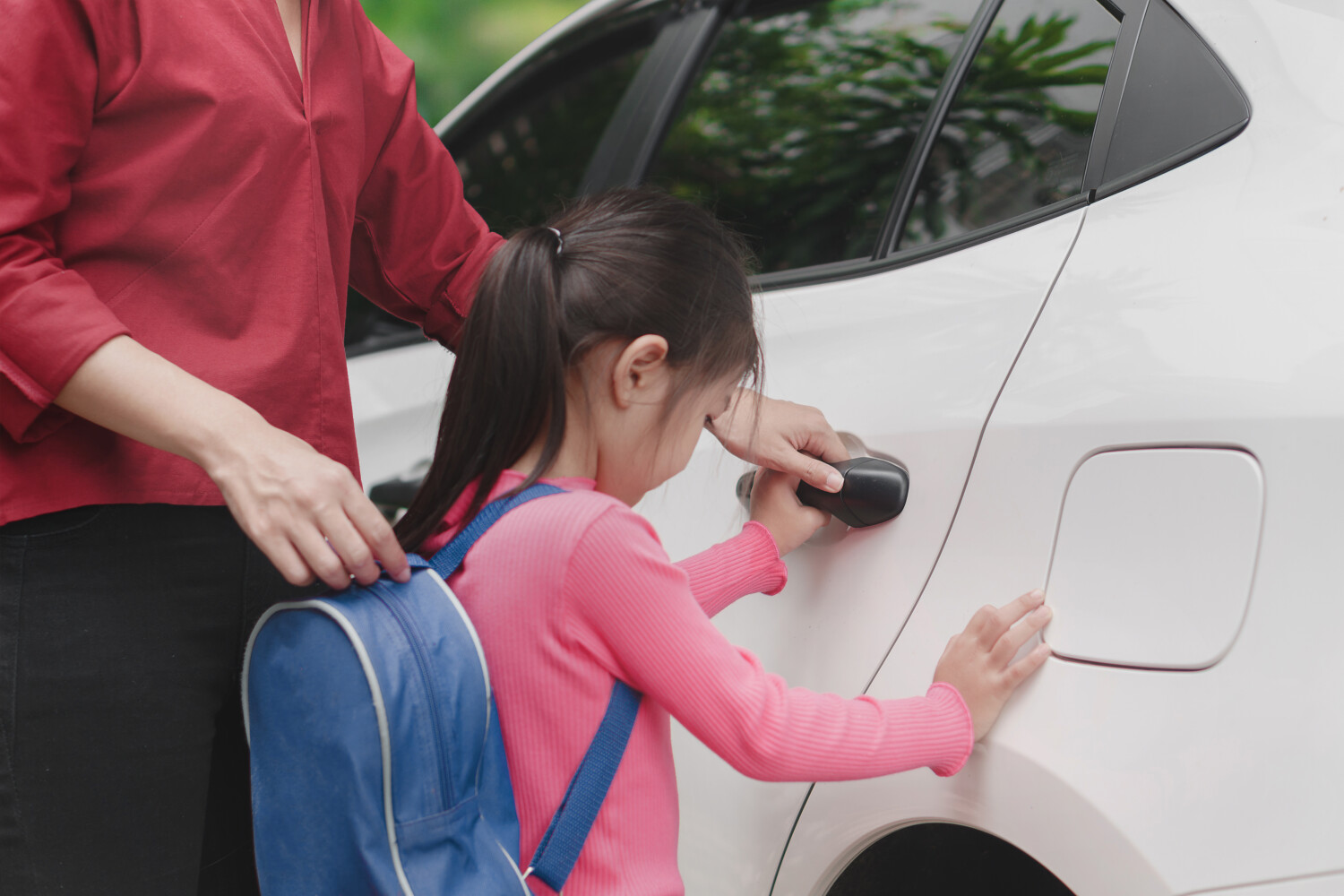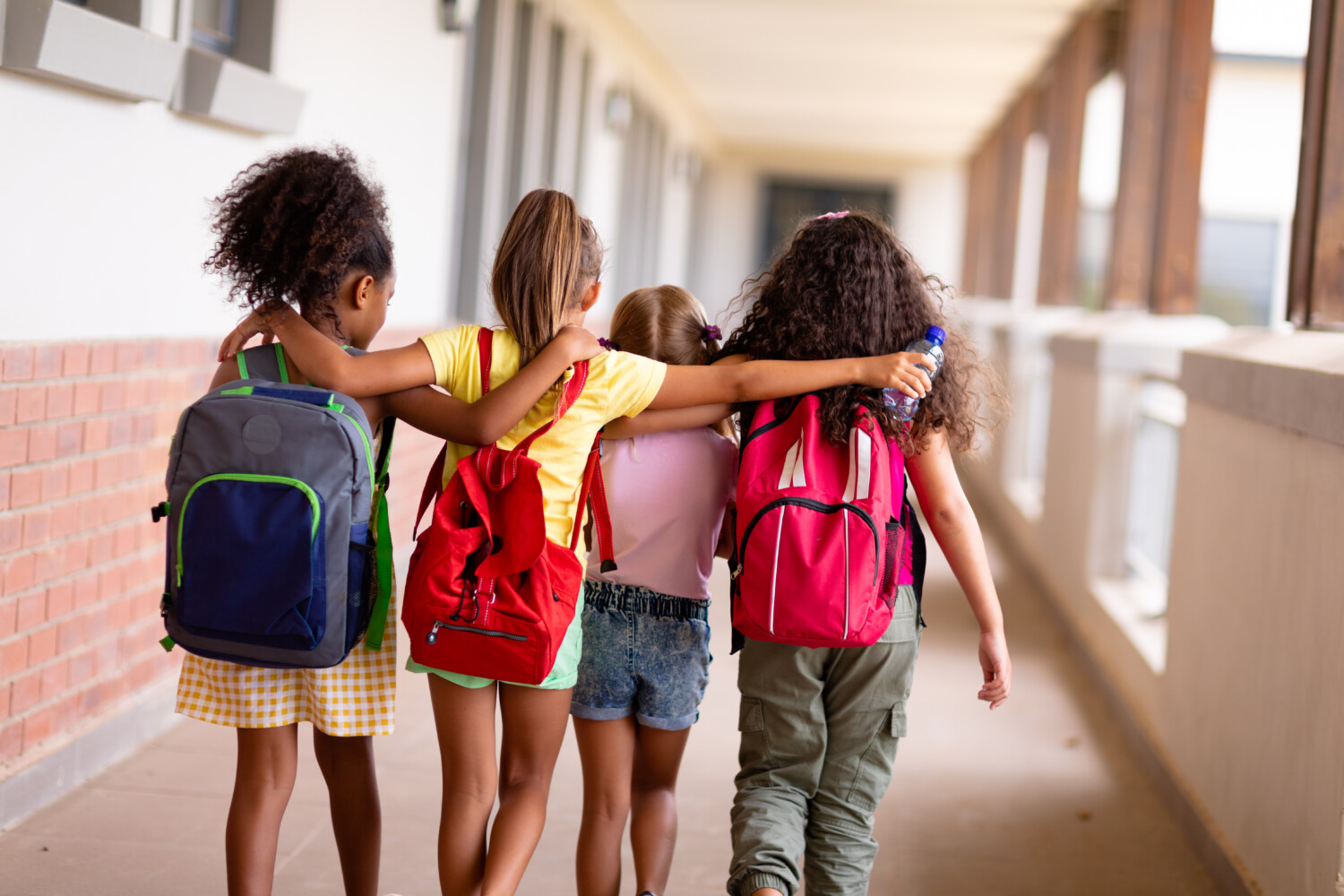When can kids walk to school alone?
It’s back-to-school time! Are you wondering whether this is the year you can let your child walk to school alone? Before you voice this question aloud, be aware: People have a lot of differing opinions on this, and they’re often pretty strong.
MORE: Kindergartners cheer for classmate as he sprints home from the bus every day after school
First, the facts.
There is no federal law dictating the age at which children are allowed to travel to and from school by themselves. On the contrary, there’s actually a law on the books preventing law enforcement from penalizing parents for letting their children walk to school. A provision of 2015’s Every Child Succeeds Act says that nothing will “prohibit a child from traveling to and from school on foot or by car, bus, or bike when the parents of the child have given permission.”
States can enact their own laws, of course, but even there the trend has been to leave the decision to parents. In fact, several states have passed laws that protect parents who allow young children to walk alone when they think it’s appropriate, including Montana, Connecticut, Virginia, Utah, Texas and Illinois.
MORE: Take the best back-to-school photos with these professional tips
What the Experts Say
So, how to make this decision as a parent? First, try to tune out all the noise from proponents and critics of kids walking alone. Some parents wouldn’t dream of letting their kids out of their sight along a roadway, while others are vehement that this is how kids learn independence (and that the decision is theirs to make — and theirs alone!).
The American Academy of Pediatrics does offer a general guideline: It recommends that children should not walk to school alone before 10 years of age, as it isn’t until then that most children have the cognitive ability to do so safely.
“Young children have developmental limitations that prevent them from being safe pedestrians,” the organization said. “In deciding when a child can cross streets independently, parents must consider the child’s age and maturity, the distance to be traveled, the amount of on-street parking, and the volume and speed of traffic.”
As the AAP hints here, each child is different, and parents should consider their own child’s developmental stage to determine whether they’re ready for a solo trip to school.
And not only are all children different, but each child’s situation varies. Is your child one block from the school with no streets to cross, or 10 blocks away with some major intersections in between? Will your child have an older sibling with them? Are there high crime rates in your neighborhood? Will your child be carrying a phone? All these factors and others will come into play as you make your decision.
You should note, however, that the AAP says its research shows parents tend to overestimate their child’s ability to handle traffic. Before allowing this, parents should teach children how to be safe pedestrians.
Pros and Cons For Letting Your Kids Travel Alone
If you feel your child is mature enough to walk to school and your particular circumstances are amenable, there are some good reasons to greenlight this idea.
First of all, fewer cars on the road emitting carbon is always a good idea. Secondly, walking to school means your child will fit in extra exercise, which helps to boost mood and overall health.
It might also boost their grades. A recent study published in the European Journal of Public Health produced some hard evidence to support this notion.
“Active school transport [walking or biking to school] was associated with higher odds of high perceived academic performance and self-reported competency in academic skills,” Juuso Jussila, a doctoral researcher at the University of Eastern Finland and one of the study’s authors, told HuffPost. “Moreover, walking or cycling to school was linked to higher school enjoyment.”
And if you’re worried about your child’s safety, don’t let scary cop shows taint your perception.
“In 2021, 27,733 missing children were reported to NCMEC, and only 142 of these were abducted by someone who was not a family member,” Susan Kennedy of the National Center for Missing & Exploited Children told VeryWell Family. “These types of cases represent less than 1% of cases reported to NCMEC.”
Of course, caution is still indicated. Experts say children are most at risk of abduction (whether by a stranger or a relative) while going to or from school and school-related activities alone, between 7-9 a.m., 3-4 p.m., and 6-7 p.m.
Along with that, there’s been an 11% uptick in child pedestrian deaths since 2013, the AAP says, with children of color more likely to be affected. This state of affairs led the organization to create its first policy statement around child pedestrian safety since 2009. The AAP says even minor accidents can lead to post-traumatic stress in young people, so parents should be prepared to deal with that.
MORE: This chart shows you when you should put your kids to bed
Tips for Safely Walking to School
If you choose to allow your child to walk to school solo, keep some important safety tips in mind.
Make Sure Your Child Knows the Route
To start with, walk the route with your child a few times, making sure they’re following the basic rules about looking both ways before crossing the street. Remind your child to be aware of their surroundings at all times and to watch for drivers who might not see them. They should be especially vigilant when passing driveways.
“Drivers may not see small children when backing up their vehicles in a driveway or lot,” Dr. Sadiqa A.I. Kendi, who co-wrote the AAP’s 2023 policy statement, told healthychildren.org.
Plan to Drive Them If They Stay at School Too Late
Don’t allow them to walk alone during the riskiest time of day for child pedestrians. According to the AAP, that’s the hours between 6 p.m. to 9 p.m.
Don’t Fully Label Their Items
When labeling their belongings like backpacks or lunch boxes, don’t write their entire names in full view.
“That could actually give a stranger the chance to use your child’s name and pretend to know them,” Debra Holtzman, a child safety expert, told HuffPost.
Instead, use just their initials or attach the label to the inside of the bag or box.
Teach Kids the Difference Between Safe and Unsafe Adults
Resist the urge to forbid your child from talking to strangers, which could instill anxiety and prevent them from speaking to safe adults like librarians and crosswalk guards. Instead, have a discussion about the difference between safe and unsafe adults. A typical predator behavior is to ask a child to help them find a lost pet or to help them carry something.
Explain to your child that a safe adult wouldn’t approach a child asking for help. Then arm them with this simple phrase — “I’m not allowed to do that” — which they can use if they feel uncomfortable.
Give Them Clear Rules About Safe Behavior
Let them know that they should never get into a car with someone they don’t know.
“Instruct children to ignore drivers or individuals who try to engage them in conversation,” Rosemary Webb, co-president of Child Lures Prevention, told HuffPost. “If feeling uneasy or scared, instruct children to approach a mom or dad with kids of their own and say, ‘I do not feel safe.’”
There’s Safety in Numbers
Depending on how young your child is, you might want to make sure they have a friend to accompany them on the walk, and that someone has a cell phone. (That said, looking at the cell phone while walking is dangerous for both kids and adults — it should stay inside a backpack unless needed.)


